Blog
How rising water temperatures impact marine and aquatic life
Read moreAnimals with the longest tails
In the animal kingdom, tails serve a variety of purposes. For some marine and aquatic animals, tails are important for locomotion. Sharks, whales, and dolphins all rely on their tails to move. For land animals, they can be helpful for balancing or climbing, like in the case of monkeys. Others, like cows, use their tails to brush away flies and other insects. Canines like dogs and wolves use their tails in a form of communication. In birds, tail feathers can serve an important role in flight.
Tails range from short and stubby to longer than an animal’s body length. Some are furred, some are finned, and some are feathered, but all are fascinating to us humans who don’t possess one. Here are 12 animals with some of the longest tails on the planet and some of the longest tails relative to their body size.
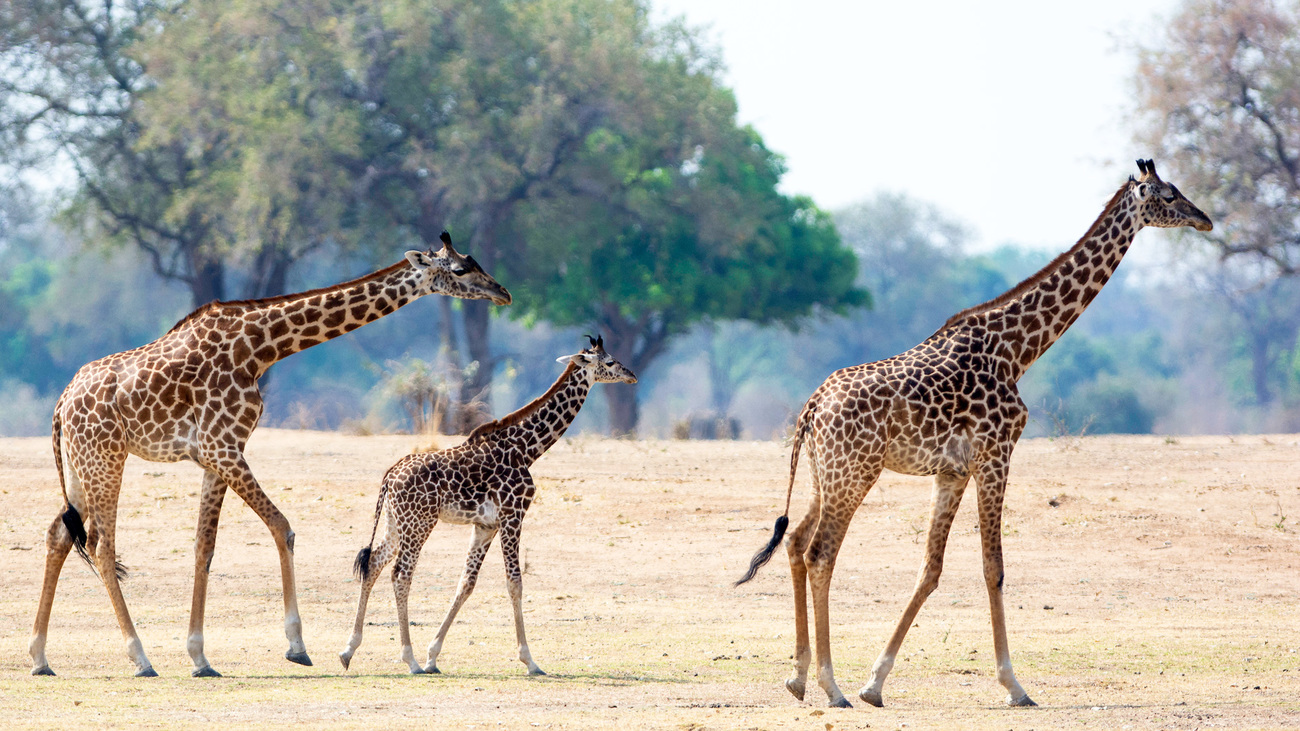
Giraffes are well-known for being the tallest land animals on Earth, but did you know that they also have some of the longest tails? While giraffes stand about 5.5 metres (18 feet) tall, their tails hang about 2.4 metres (8 feet) long. Giraffes’ tails act like flyswatters—they shoo off pesky biting insects.
Though giraffes as a species aren’t endangered, some subspecies of giraffes are. Poachers often target giraffes for their parts to be sold in the illegal wildlife trade.
The long-eared jerboa is a small, mouse-like rodent, but it might look more like a kangaroo to some. It has long legs, feet, and a tail that allow it to jump. Its ears are also quite large. Long-eared jerboas generally measure about 70 to 90 milimetres in body length (2.8 to 3.5 inches), and their thin tails are about 150 to 162 milimetres (5.9 to 6.4 inches) long. Their tails are covered in fine, brown hair, with a black and white tuft of fur at the end. Long-eared jerboas are found in southern Mongolia and northwestern China.
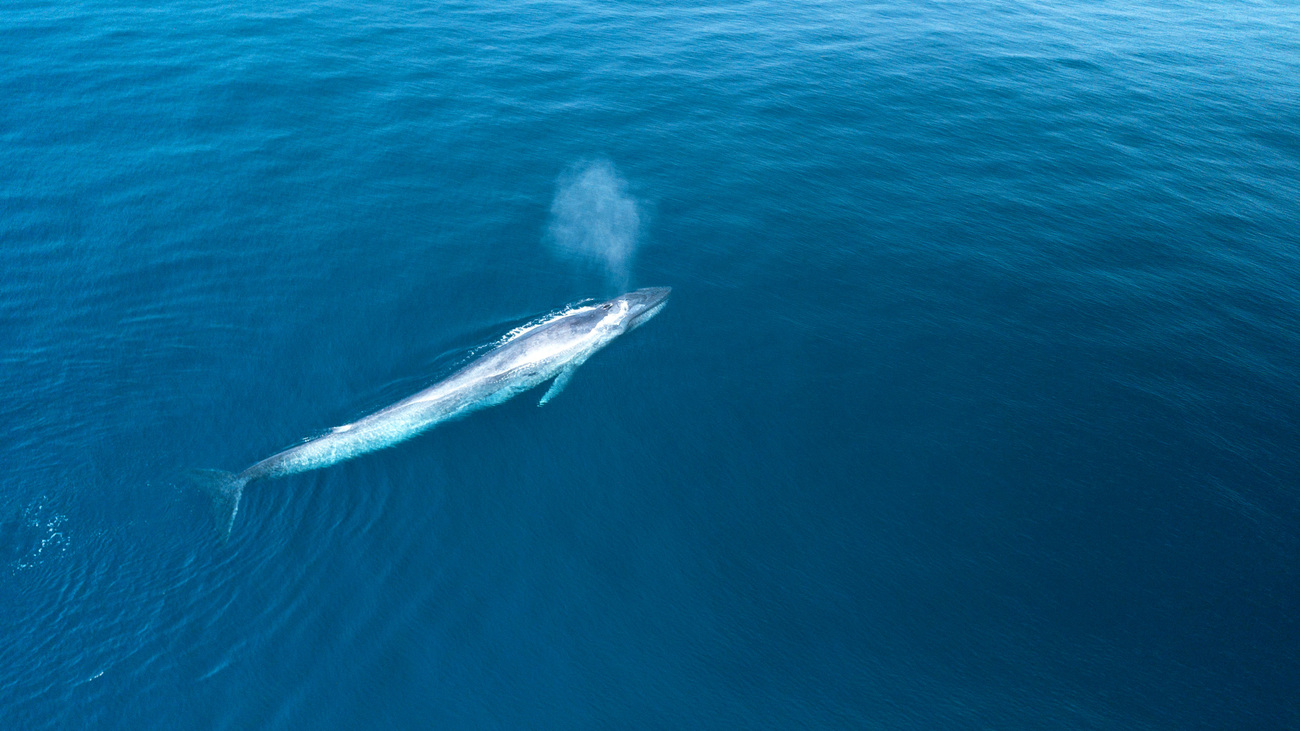
As the largest animals to have ever lived on the planet, of course blue whales have one of the biggest tails. Whales are known for their distinctive tail shapes, which are called flukes. The fluke of a blue whale measures about 7.5 metres (20 to 25 feet) wide—wider than the top-to-bottom length of a giraffe’s tail. The blue whale’s body length is about 30 metres (100 feet).
Blue whales are sadly endangered, and many of the threats they face are caused by humans. Some of the biggest are entanglement, vessel strikes, and ocean noise pollution. These are all issues IFAW is working to combat.
Found in sub-Saharan Africa, the long-tailed widowbird has one of the longest tails of any bird in proportion to body size. They are medium-sized passerine birds, but the tails of males reach 20 centimetres (7.9 inches) long and consist of many feathers. In total, their body length is about 71 centimetres (28 inches), so their tails make up almost 30% of their total length. While males are black with red plumage on their shoulders and possess these magnificent tails, females are dull brown in colour and have much shorter tails.
Their long tails don’t seem to serve much of a purpose other than to attract females, who may instinctually choose males with longer tails. If anything, the tails seem to hinder their flying ability.

Found in the grass and bamboo fields of Southeast Asia, long-tailed grass lizards are tiny, green and brown reptiles with tails that grow up to three times their body length. These lizards are about 25 to 30 centimetres (10 to 12 inches) long, so their tails can grow up to about 60 centimetres (24 inches) long.
Their tails are prehensile, meaning they are adapted to grab onto things. For long-tailed grass lizards, this can assist in climbing small branches. Like many other lizards, they can drop their tails when threatened. This helps small reptiles escape predators if the predator attempts to grab them by their tails.
Angolan colobus monkeys are tree-dwelling primates found in sub-Saharan Africa. They’re mostly black but have long tufts of white fur growing from the sides of their heads. Female Angolan colobuses are a bit smaller than males. While males grow to 69 centimetres (27 inches) long and have 84-centimetre (33-inch) tails, females measure 48 centimetres (19 inches) long with 71-centimetre (28-inch) tails. These long tails help them hop and swing between trees.
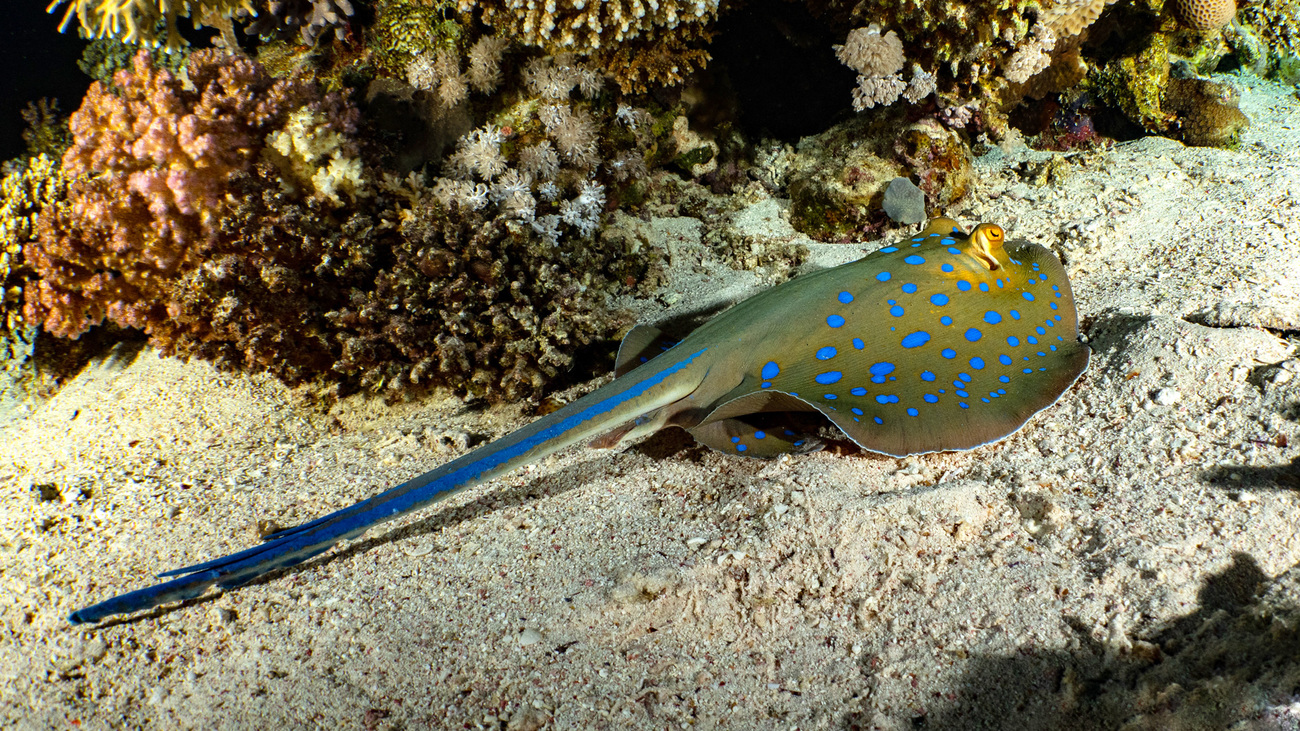
Whiptail stingrays, found in tropical and temperate waters, can have tails up to three times their body length. Their name comes from how their tails act like whips, because they are barbed and used to ‘whip’ prey. Near the base of their tails, they have one or more venomous stings. When they’ve stung another animal, they move their tail in a whip-like motion to leave the stinger behind, embedded in the victim.
Often mistaken for snakes because they have no legs, slender glass lizards are found in the US Southeast and Midwest. Unlike snakes, they have ears and eyelids, and they lack the large belly-plates and muscles that help snakes slither across smooth surfaces. Also, while snakes technically have long bodies and short tails, legless lizards have shorter bodies and long tails. The snout-vent length (the vent is the opening underneath their tail, where the digestive tract, bladder, and reproductive system empty out) of a slender glass lizard is about 220.5 milimetres (8.7 inches), and its tail length is about 351 milimetres (13.8 inches).
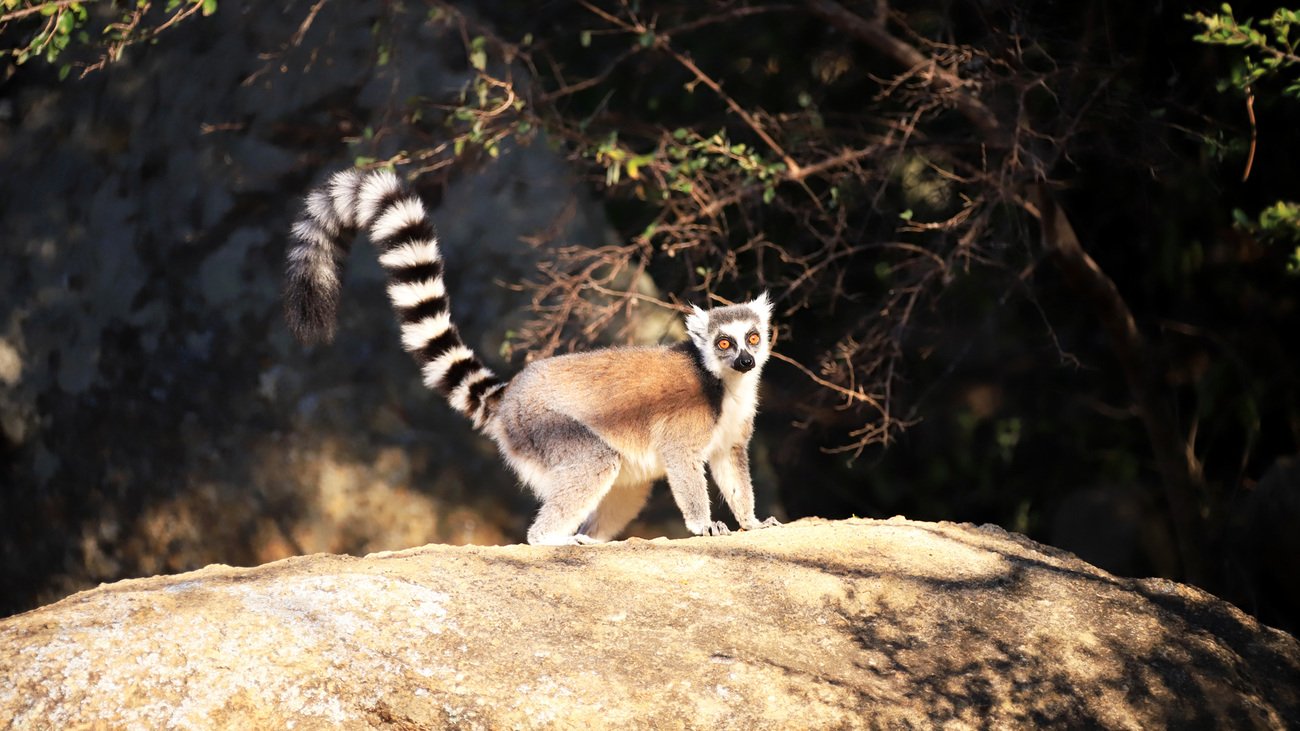
Found in Madagascar, ring-tailed lemurs are known for the distinctive black and white stripes of their fluffy tails. They typically have 13 stripes, and their tails grow up to 61 centimetres (two feet) long, while their total body length is about one metre (three feet). Their tails help them keep balance while climbing in trees, but they also use them for communication—lemurs will raise their tails above tall grass to let others know where they are.
Spider monkeys have thin bodies and long limbs in addition to possessing very long tails. Their bodies are about 16 to 21 inches long, and their tails are about 28 to 34 inches. These tails are prehensile, meaning they are often used like a fifth limb for grasping tree branches. Spider monkeys are extremely agile and acrobatic, which is important since they are arboreal.
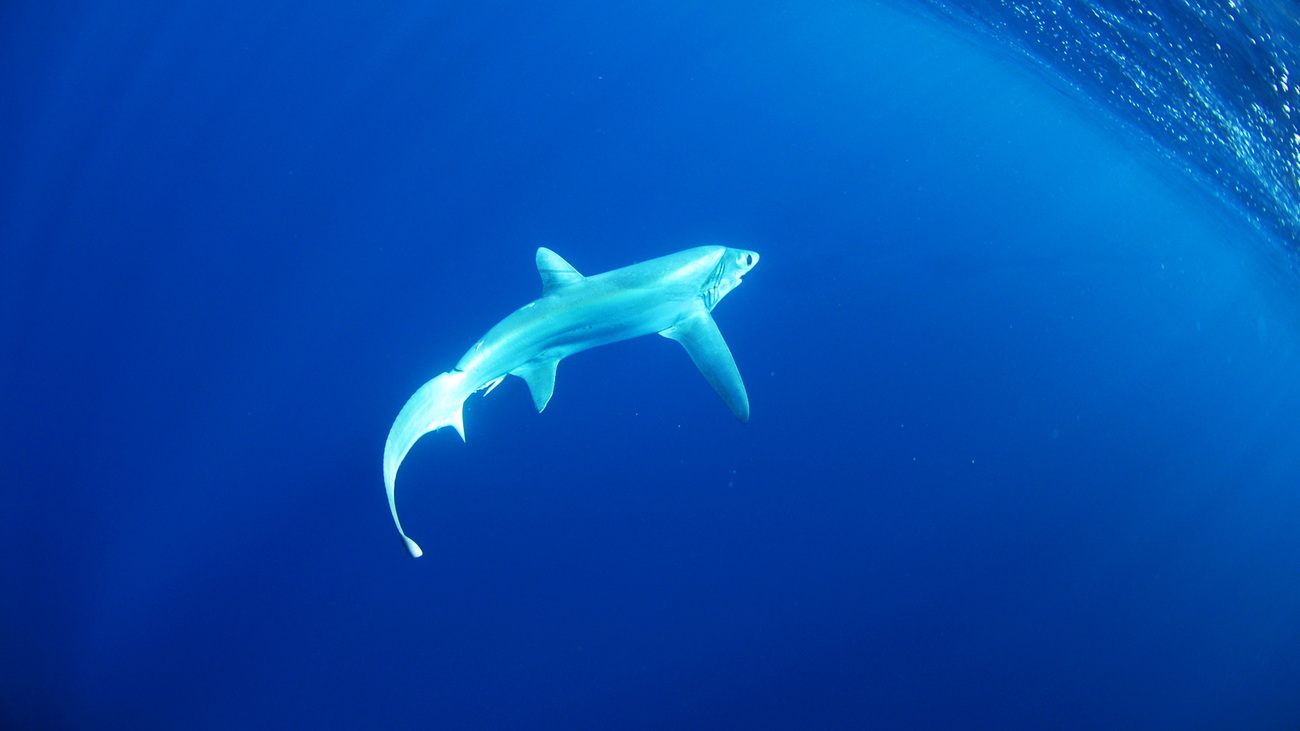
In addition to having some of the biggest eyes in the animal kingdom, thresher sharks have quite long tails for sharks. While their total body length ranges from 4.5 to 6 metres (about 15 to 20 feet), their tails take up about three metres (10 feet) of this length. Their tails are also quite narrow, and only the top half of the tail extends to great lengths, while the bottom half is a short stub like their dorsal fins.
The ribbon-tailed astrapia is a bird-of-paradise species found in Papua New Guinea. Like many other birds-of-paradise, the males of the species possess extravagant ornamental features that help them attract mates. While the plumage on their bodies are vibrant shades of dark green, blue, and purple, the tails of male ribbon-tailed astrapias are pure white, save for a black tip of each feather. They have the longest tails in relation to their body size of any bird—while their bodies are about 32 centimetres (1 foot) long, their tails are about 1 metre (3 feet) long.
Want to help protect these amazing animals and others around the world?
Every problem has a solution, every solution needs support.
The problems we face are urgent, complicated, and resistant to change. Real solutions demand creativity, hard work and involvement from people like you.
Unfortunately, the browser you use is outdated and does not allow you to display the site correctly. Please install any of the modern browsers, for example:
Google Chrome Firefox Safari